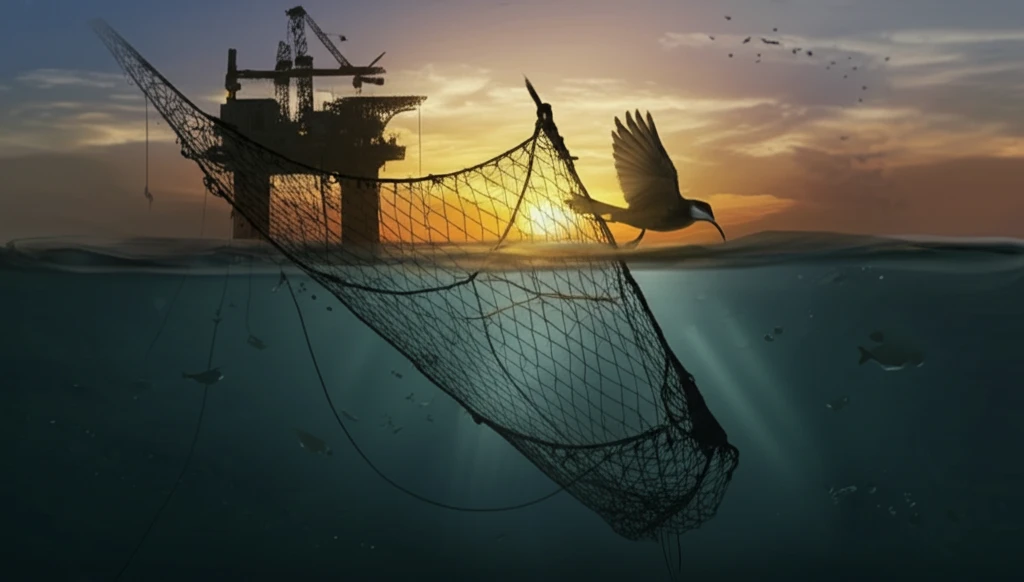
Vanishing Wings: What's Killing Migratory Birds in Our Oceans?
"A deep dive into the alarming impact of fisheries and offshore oil production on marine bird populations, and what we can do about it."
Our oceans, once teeming with life, are facing a silent crisis. While the spotlight often shines on the plight of whales and dolphins, another group of marine inhabitants is quietly suffering: migratory birds. These creatures, undertaking incredible journeys across vast expanses of water, are increasingly falling victim to human activities in our seas.
Two major industries are primarily to blame: commercial fisheries and offshore oil and gas production. These sectors, while vital to our economy, inadvertently create deadly hazards for birds. Whether through accidental capture in fishing gear or exposure to oil pollution, the impact is significant and demands our attention.
Let's explore what scientific research reveals about the causes and scope of this mortality, and more importantly, what steps we can take to protect these essential members of our marine ecosystems. This is not just about conservation; it's about ensuring the health and balance of our planet.
The Grim Reality: How Fisheries Threaten Marine Birds

Commercial fishing, a cornerstone of the global food supply, presents a serious threat to migratory birds through bycatch – the unintentional capture of non-target species. Birds become entangled in fishing gear, primarily longlines, gillnets, and bottom trawls, leading to injury or death. This issue is especially pronounced in the Atlantic and Pacific regions of Canada, where numerous migratory bird species converge.
- Longlines: Baited hooks attract seabirds, causing them to become hooked and drown during the setting of gear.
- Gillnets: These nearly invisible nets are a significant entanglement hazard, trapping birds underwater.
- Bottom Trawls: While less commonly associated with bird bycatch, interactions with trawl cables and the nets themselves can lead to mortality.
A Call to Action: Protecting Our Feathered Navigators
The mortality of migratory birds due to commercial fisheries and offshore oil and gas production is a complex issue that requires collaborative solutions. By supporting sustainable fishing practices, advocating for responsible environmental policies, and demanding greater transparency from industries, we can safeguard these incredible birds and ensure the health of our oceans for generations to come. The future of these migratory birds depends on our collective action. Let's work together to ensure their survival.
